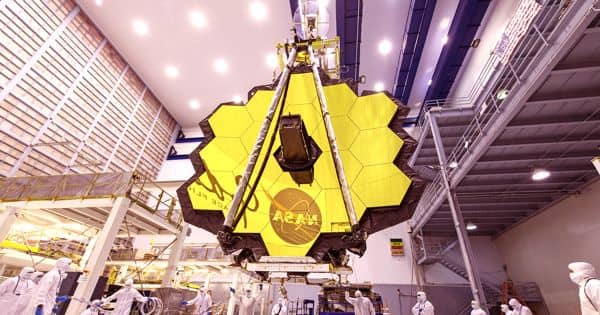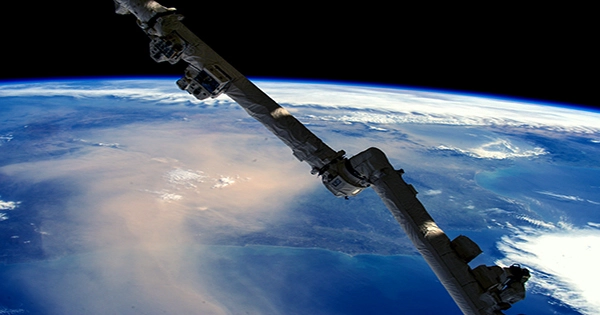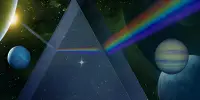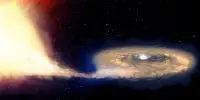Dust particles can electrify when they collide with one another, as they do in Martian dust storms, and transfer positive and negative electric charge in a manner similar to how you accumulate static electricity when you shuffle over a carpet.
It is maybe not unexpected that this also occurs on Mars as strong electric fields accumulate in dust storms on Earth. What occurs next, though? Most likely not a sudden lightning strike, as we might anticipate on Earth.
Alian Wang, a planetary scientist at Washington University in St. Louis, believes that electrical discharge on Mars is more likely to appear as a subtle glow. (No Mars rovers, landers, or other missions have actually taken a photo of it).

According to Wang, a research professor of earth and planetary sciences in the School of Arts & Sciences, “it could be somewhat like the aurora in polar regions on Earth, when energetic electrons smash with dilute air substances.”
This Martian “faux-rora,” flashy or not, nonetheless has a lot of power.
According to a recent study by Wang published in the journal Geophysical Research Letters, the Mars chlorine cycle may be primarily fueled by electricity generated during dust storms.
For context, scientists believe that chlorine is one of the five “mobile” elements on Mars (the others are hydrogen, oxygen, carbon and sulfur). This implies that on Mars, chlorine travels between the surface and the atmosphere in a variety of forms. Chloride deposits, which resemble salty playas or shallow salt flats on Earth, are widely distributed on the surface. These chloride deposits probably developed when chloride salts from brine precipitated during Mars’ early past.
In the new work, Wang demonstrates that reactions sparked by electrical discharge produced by Martian dust activities are one particularly effective mechanism to transport chlorine from the ground to the air on Mars.
In a series of tests, Wang and her colleagues produced large amounts of chlorine gas from ordinary chlorides by electrically discharging the solid salts in a Mars-like environment. At Washington University, they carried out these investigations using a planetary simulation chamber (called the Planetary Environment and Analysis Chamber, or PEACh).
According to Kevin Olsen, a research fellow at The Open University in the UK and a co-author of the new study, “the high-releasing rate of chlorine from common chlorides revealed by this study indicates a promising pathway to convert surface chlorides to the gas phases that we now see in the atmosphere.”
These results provide evidence that the global chlorine cycle may be influenced by Martian dust activity. We observe recurring seasonal activity with the ExoMars Trace Gas Orbiter that coincides with both global and local dust storms, the scientist stated.
Easier on Mars than on Earth
Wang, a faculty fellow at the university’s McDonnell Center for the Space Sciences, said: “Frictional electrification is a typical process in our solar system, with Mars dust activities recognized to be a major source of electrical charge buildup.” The breakdown of stored electrical fields into electrostatic discharge is made simpler on Mars due to its thin atmosphere. In actuality, Mars is a hundred times easier than Earth.
The idea that dust storms might be the cause of the new reactive chemistry on the red planet was initially put forth by scientists who worked on the Viking missions, which landed on Mars in the 1970s.
Studying the molecular impacts of dust activities was challenging, though. Opportunities for certain missions, such as the ExoMars Schiaparelli EDM launched in 2016, were unsuccessful. Models and experimental research were employed by scientists.
Wang and other scientists have recently released research that demonstrates how electrostatic discharge can produce perchlorates and carbonates as well as release chlorine gas when it interacts with chlorine salts in an atmosphere similar to Mars and rich in carbon dioxide.
This new research, however, is the first to attempt to estimate how much of these chemical compounds are actually created when dust storms occur.
Wang remarked, “The reaction rates are enormous.” “Importantly, the released chlorine is at a % level in a short-time, mid-strength electrostatic discharge method.” This indicates that at least one chloride molecule in every 100 is broken down during a seven-hour simulation of an electric discharge experiment, releasing its chlorine atom into the environment.
The formation rates of carbonates and perchlorates are at sub-percent and per-thousand levels, respectively, Wang added. These rates are comparable but slightly lower.
Wang and her team are convinced that the Martian dust activity can be connected to three recent discoveries of three worldwide phenomena thanks to these high yields.
According to her, the exceptionally high worldwide perchlorate and carbonate concentrations in Martian topsoil can be linked to electrical discharge. Quantitatively, within less than half of the Amazonian period, the most recent period of Mars’ history, which is believed to have started around 3 billion years ago, dust storm-induced electrical discharge can accumulate at the upper end of the observed concentration ranges. Additionally, if a global dust storm would kick up 1 to 10 cm of Martian surface dust, the high yield of chlorine atoms released from chlorides can explain the high quantities of hydrogen chloride recorded in the Martian atmosphere during the 2018 and 2019 dust seasons.
Wang asserted, “Especially with a such quantitatively high yield of chlorine emission, we are aware of no process that can do this.”
















